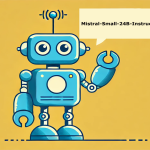- PIXHELL and RAMBO Attacks Target Air-Gapped Systems: New Cybersecurity Threats
- The Rise of Side-Channel Attacks
- RAMBO Attack: Turning RAM into a Covert Radio Transmitter
- PIXHELL Attack: Exploiting Monitors for Acoustic Data Theft
- Real-World Implications and Mitigation Strategies
- Conclusion: A Wake-Up Call for Cybersecurity
PIXHELL and RAMBO Attacks Target Air-Gapped Systems: New Cybersecurity Threats
In the world of cybersecurity, air-gapped systems—computers isolated from any network connection—are considered the pinnacle of security for protecting highly classified data. However, recent research by Mordechai Guri has demonstrated that even these isolated systems are vulnerable to sophisticated attacks. Two of Guri’s latest papers introduce revolutionary methods, dubbed RAMBO and PIXHELL, that exploit side-channel vulnerabilities in hardware to steal data without the need for traditional network connections.
The Rise of Side-Channel Attacks
Side-channel attacks are not new, but the evolution of these techniques is increasingly alarming. Traditional cybersecurity focuses on protecting against attacks transmitted over networks, but side-channel attacks exploit physical signals emitted by hardware components such as electromagnetic waves, acoustic noise, or power fluctuations.
RAMBO Attack: Turning RAM into a Covert Radio Transmitter
The first method, known as the RAMBO attack, showcases how attackers can use random access memory (RAM) to generate radio signals that transmit data. By carefully controlling voltage fluctuations during data writes, RAM modules can be made to emit detectable radio waves. These signals can then be intercepted by a radio receiver located up to seven meters away.
The key to this attack lies in malware that initiates data writes to the RAM in rapid bursts, alternating with pauses to mimic a kind of Morse code. Guri demonstrated that by manipulating these bursts, data can be encoded and transmitted at speeds of up to 1000 bits per second (bps). While this may seem slow compared to modern data transfer standards, it is sufficient for tasks such as transmitting keystrokes in real-time.
What sets the RAMBO attack apart is its ability to transmit data over a relatively long distance without the need for sophisticated equipment. Although previous attacks leveraged a 2.4 GHz frequency, which is commonly used by household devices and Wi-Fi, the RAMBO attack operates at a lower frequency of around 975 kilohertz, making it more efficient and harder to detect amidst typical radio noise.
Countering the RAMBO Attack
To mitigate this threat, Guri suggests hardware-based solutions such as shielding computers or even entire rooms from radio wave emissions. This method, however, is impractical for everyday users and primarily applies to high-security environments handling extremely sensitive data.
PIXHELL Attack: Exploiting Monitors for Acoustic Data Theft
Guri’s second technique, the PIXHELL attack, exploits the barely audible acoustic noise emitted by computer monitors. This method uses the voltage fluctuations in a monitor’s circuitry, triggered by displaying specific bitmap patterns on the screen. When a series of black-and-white rows are displayed, the resulting noise can carry encoded data, similar to the RAMBO attack.
What’s particularly alarming about the PIXHELL method is its ability to be detected using something as ubiquitous as a smartphone. The phone’s microphone can pick up the noise generated by the monitor, provided it is within two meters of the screen. This creates a significant vulnerability, as attackers no longer need specialized equipment to steal data.
However, this method is not without limitations. The transmission speed is a mere 20 bps, and the attacker would need to position their smartphone very close to the monitor. Additionally, the black-and-white patterns required for the attack would be noticeable to a user, making the attack more detectable.
Countering the PIXHELL Attack
Similar to the RAMBO attack, the PIXHELL method requires innovative countermeasures. One potential defense is to generate random noise in the environment, masking the acoustic signals generated by the monitor. Another approach is to implement software that prevents unwanted display patterns from being rendered, ensuring that the monitor operates normally during critical periods.

Real-World Implications and Mitigation Strategies
The rise of these side-channel attacks presents a serious challenge for organizations relying on air-gapped systems to secure sensitive data. While Guri’s methods may seem like theoretical exercises, they underscore the vulnerabilities in hardware components that cybersecurity solutions often overlook.
Practical Mitigation for Air-Gapped Systems
Organizations should implement the following measures to protect against these new side-channel threats:
- Physical Shielding: Invest in shielding technologies that block electromagnetic and acoustic emissions from computers and monitors.
- Access Control: Strengthen access protocols to prevent unauthorized individuals from placing devices such as smartphones near sensitive equipment.
- Noise Generation: In high-security environments, consider using devices that generate random noise to interfere with any acoustic data transmission attempts.
- Malware Detection: Prioritize detecting and removing malware that could be the vector for these types of attacks, rather than trying to prevent all possible exfiltration methods.
Conclusion: A Wake-Up Call for Cybersecurity
Mordechai Guri’s research into RAMBO and PIXHELL attacks serves as a stark reminder that even the most isolated systems are not immune to exploitation. These attacks bypass conventional network-based defenses by exploiting the physical properties of hardware components. For cybersecurity professionals, this research highlights the need to look beyond software vulnerabilities and consider the hardware-level risks that could undermine the security of air-gapped systems.
As technology evolves, so too do the methods used by attackers. It’s essential to stay ahead of these developments by implementing robust security measures and remaining vigilant against emerging threats.
Concerned about the security of your air-gapped systems? Stay informed by subscribing to our newsletter for the latest in cybersecurity research and best practices. Share this article to raise awareness about these revolutionary new threats!






